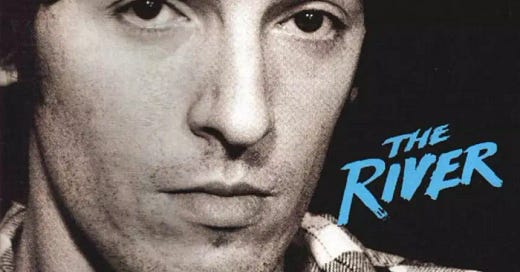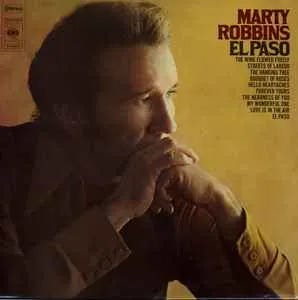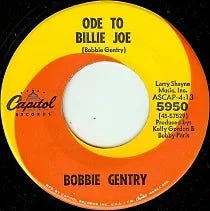Playlist: Songs That Tell Stories
Legendary story songs that took us somewhere else—and sometimes broke our hearts doing it.
Let’s have a little fun this week, okay? I love songs that are stories put to music. As I grew up and heard them on the radio, they took me to another world. Even if the story was just that — a tale — it still was an entrancing way that music could affect you.
When I made it into radio, it seemed that a lot of story songs made the airwaves, whether brand new, or oldies at the time.
Let’s start with Marty Robbins’ “El Paso,” which was written and recorded in 1959, and became the first number one song in the US on both the pop and country charts. As its Wikipedia entry says, “It is widely considered a genre classic for its gripping narrative which ends in the death of its protagonist, its shift from past to present tense.”
Then comes Bob Dylan’s “Black Diamond Bay,” from his Desire album, is replete with volcanoes, an island, gambling, and more. Joseph Conrad's novel Victory was a major influence on this song, which references many of its themes; the song title, the island, the volcano, the gambling and the Panama hat are all references to Victory. A drawing of Conrad appeared on the back of the album sleeve.
On to “The Wreck of the Edmund Fitzgerald” by Gordon Lightfoot. The song grew out of a Newsweek article in late 1975, along with other assorted news articles about the November 1975 sinking of the ship. Lightfoot has said he considers it among his finest works. The song topped the charts in 1976, being a near-contemporary account of the tragedy.
Bobby Gentry’s “Ode to Billie Joe” topped the charts in 1967. From Wikipedia, “t tells of a rural Mississippi family's reaction to the news of the suicide of Billie Joe McAllister, a local boy to whom the daughter has a connection unbeknownst to her family. The song's cryptic lyrics received widespread attention, leaving its audience intrigued as to what the narrator and Billie Joe threw off the Tallahatchie Bridge. Gentry later clarified that she intended the song to portray the family's indifference to the suicide in what she deemed "a study in unconscious cruelty"; she also remarked that the object thrown was not relevant to the message.”
Townes Van Zandt wrote “Pancho and Lefty,” but Willie Nelson and Merle Haggard’s version is the definitive version. In an interview, he recalled, "I realize that I wrote it, but it's hard to take credit for the writing, because it came from out of the blue. It came through me and it's a real nice song, and I think, I've finally found out what it's about. I've always wondered what it's about. I kinda always knew it wasn't about Pancho Villa, and then somebody told me that Pancho Villa had a buddy whose name in Spanish meant 'Lefty.' But in the song, my song, Pancho gets hung...and the real Pancho Villa was assassinated.”
Tracy Chapman’s “Fast Car” is a pastiche of images of people struggling to make ends meet, and while Chapman has said that the song isn’t directly autobiographical, “I’ve raised by single mom, I was just watching people, being in a community of people who were struggling. So everyone was really just one, working hard, two, hoping that things would get better. In part everything that a person writes is autobiographical but the songs are directly so and most of them were not and Fast Car wasn’t one that was directly autobiographical. I never had a Fast Car, it’s just a story about a couple, how they are trying to make a life together and they face challenges.”
Bruce Springsteen’s album, “The River,” is filled with story songs, most of them about hopelessness of some sort, and the one that stands out is “Stolen Car.” Author June Skinner Sawyers describes the theme of the song to be "the struggle to create meaning for oneself." She notes that it "just tells a story, honestly and simply, offering one of Springsteen's most precise lyrics."
Looking Glass was a band formed in the early 70s in New Jersey, and released their first album, which contained “Brandy (You’re a Fine Girl),” written by their lead singer, Elliot Lurie. As the story goes, in February 1972, Robert Mandel was the Epic Records Promotion Manager in Washington, D.C. He received a test pressing of an album by Looking Glass, then a new group. He took the test pressing around to every radio station in the Washington/Baltimore region. At the time, WPGC AM/FM was one of the leading Top 40 stations in the country and was the number one radio station in DC. Harv Moore was the Program Director. He put the song into a one-hour rotation for two days and as Moore related at the time, "the switchboard lit up like a Christmas tree." He said that he had never received a response like that on a record in his 15 years in radio. The song went on to hit number one and sell a few million along the way.
Charlie Daniels wrote a bunch of story songs, but my favorite has always been “Uneasy Rider,” probably because it tells the somewhat hilarious story of long-haired marijuana smoker driving a Chevrolet with a "peace sign, mag wheels, and four on the floor" making his way through the south in the early 70s.
When I was a kid, I bought almost nothing but rock and roll records. The lone exception was Johnny Cash’s Live at San Quentin Prison album, which contained “A Boy Named Sue.” The Shel Silverstein song became a big hit for Cash, and it’s obvious the prison crowd loved the song. I loved the whole album, and it made me a lifelong Cash fan.
Finally…how can we leave this one off?…Arlo Guthrie’s “Alice’s Restaurant Massacree,” the title track to his 1967 album. According to Wikipedia, “The song is a deadpan protest against the Vietnam War draft, in the form of a comically exaggerated but largely true story from Guthrie's own life: while visiting acquaintances in Stockbridge, Massachusetts, he is arrested and convicted of dumping trash illegally, which later endangers his suitability for the military draft. The title refers to a restaurant owned by one of Guthrie's friends, artist Alice Brock. Although Brock is a minor character in the story, the restaurant plays no role in it aside from being the subject of the chorus and the impetus for Guthrie's visit.”
Listen along here:







